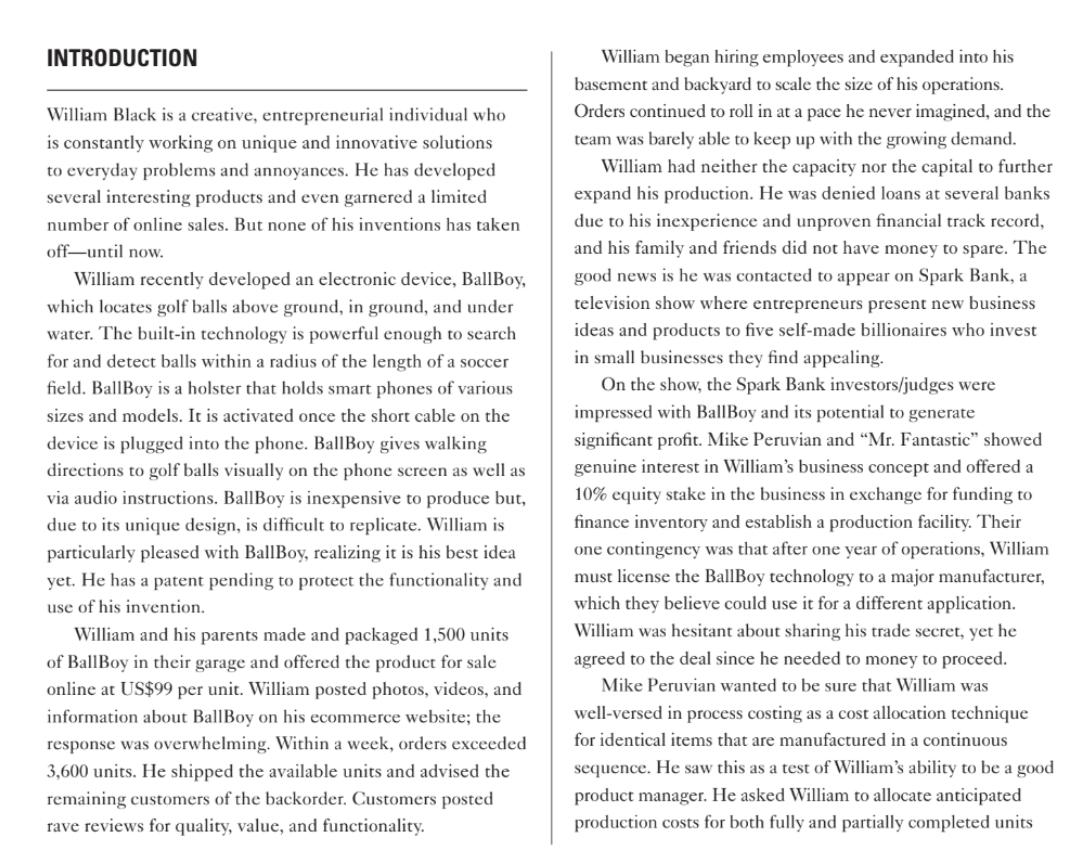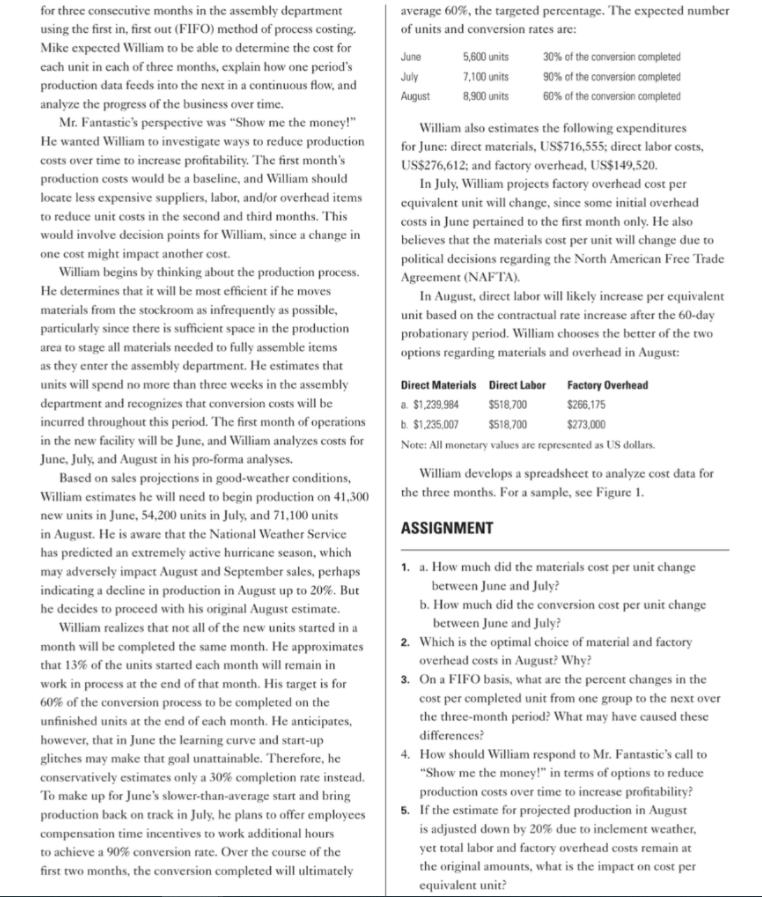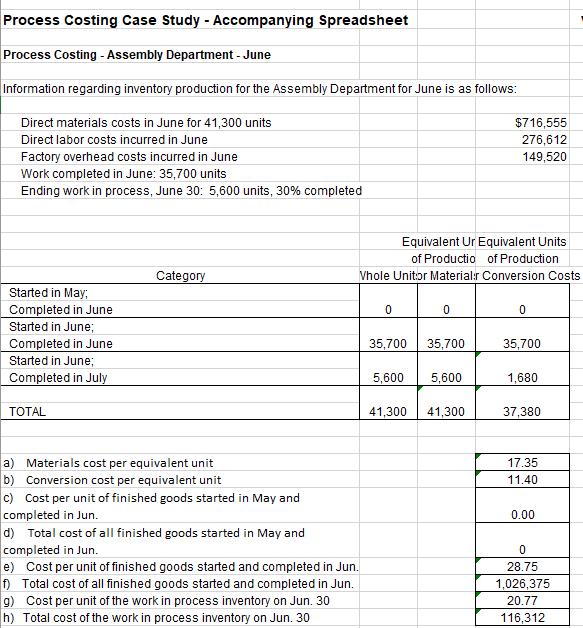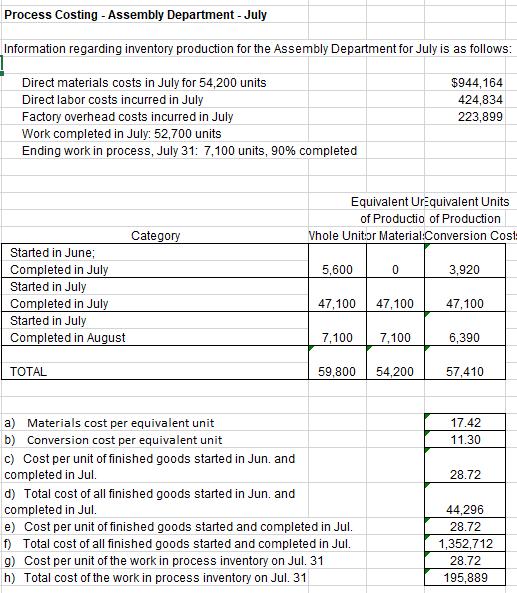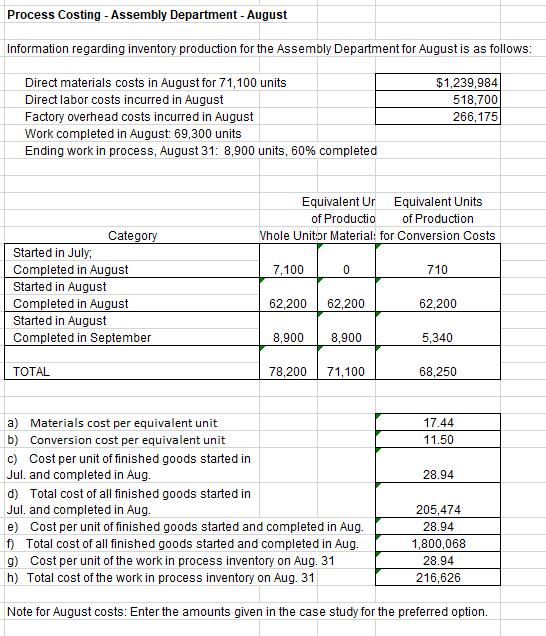1. a. How much did the materials cost per unit change between June and July? b. How...
Question:
1. a. How much did the materials cost per unit change between June and July?
b. How much did the conversion cost per unit change between June and July?
2. Which is the optimal choice of material and factory overhead costs in August? Why?
3. On a FIFO basis, what are the percent changes in the cost per completed unit from one group to the next over the three-month period? What may have caused these differences?
4. How should William respond to Mr. Fantastic’s call to “Show me the money!” in terms of options to reduce production costs over time to increase profitability?
5. If the estimate for projected production in August is adjusted down by 20% due to inclement weather, yet total labor and factory overhead costs remain at the original amounts, what is the impact on cost per equivalent unit?
6. At the selling price of US$97.00 per unit, what is gross profit for July if the packaging department adds US$0.04 to each unit and if units sold are 30,000 in June and 35,000 in July? Explain.
7. How successful was William in reducing unit costs after the first month?
8. How does knowing the cost of the units produced over three months help managerial decision making?
9. Was this spreadsheet effective in addressing Mike’s concerns that William would be able to determine the cost for each unit in each of three months, explain how one period’s production data feeds into the next in a continuous flow, and analyze the progress of the business over time? Why or why not?
10. Was accepting the licensing requirement as part of the Spark Bank financing deal a good idea? What are the positive and negative aspects of doing so?
